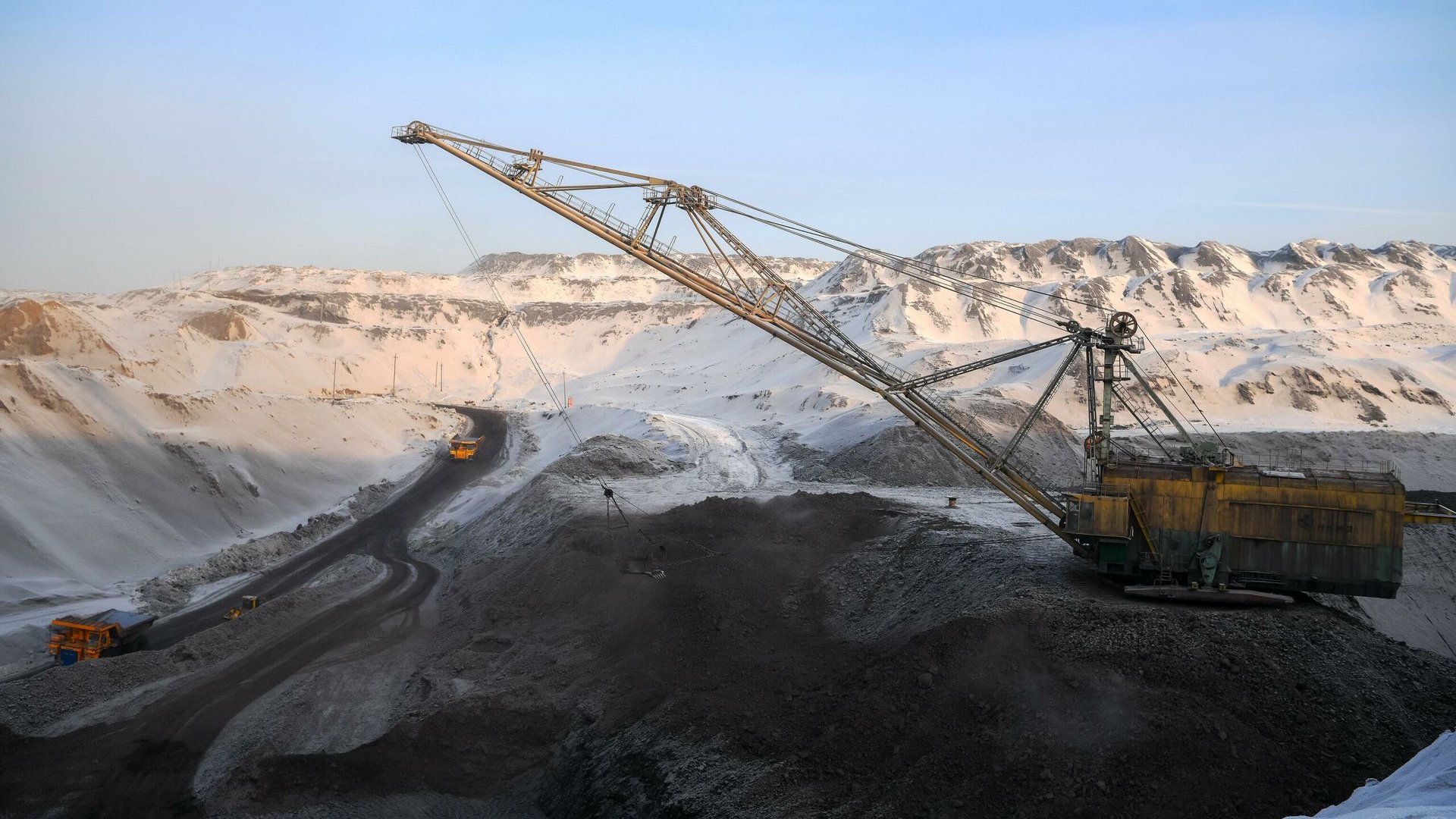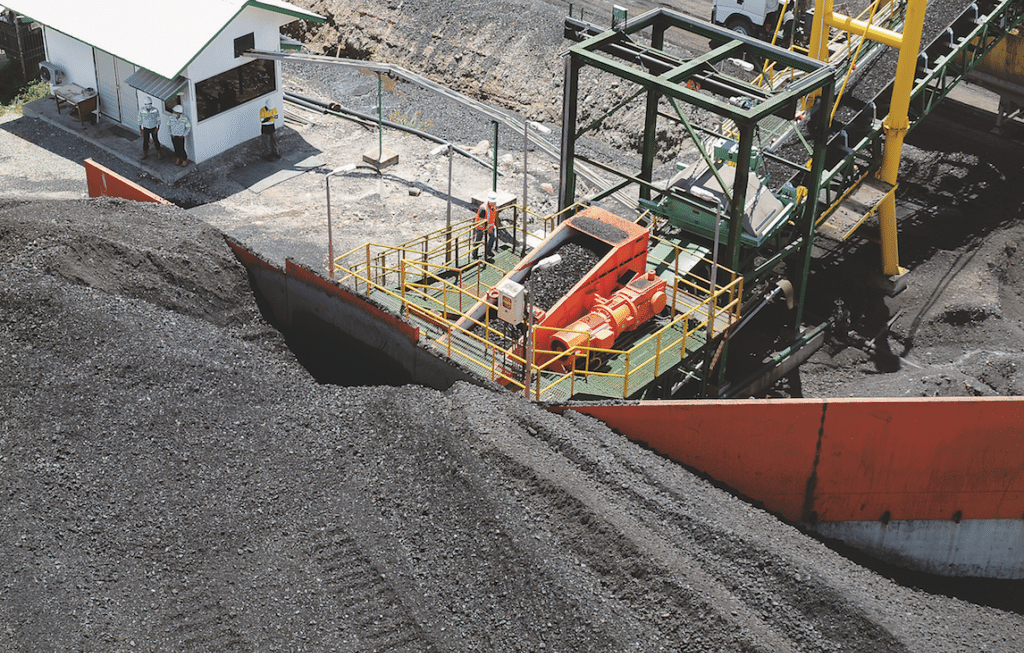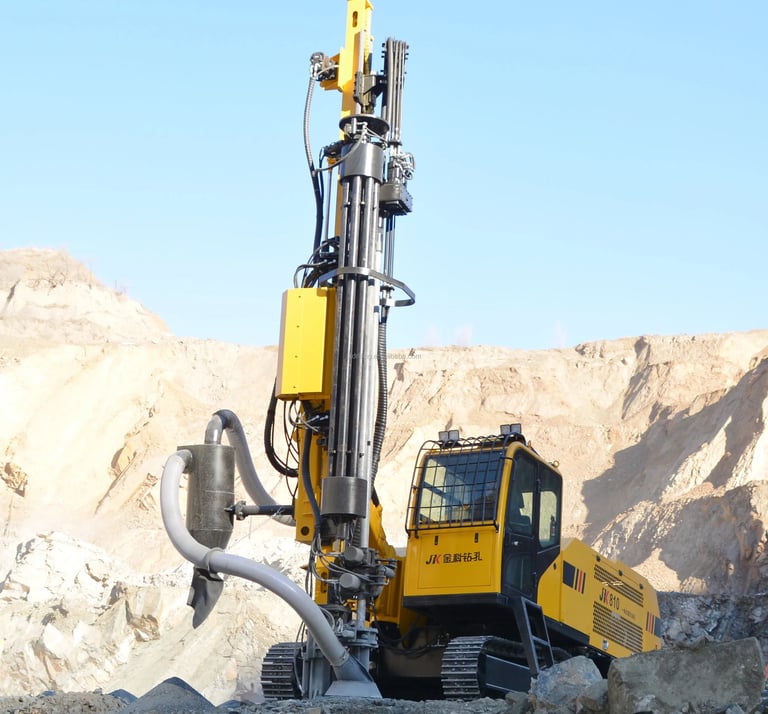Anhui Feichun Special Cable Co.,Ltd Li.wang@feichuncables.com

Type 622 ECC Mining Trailing Cable: SANS 1520-2 Compliant Heavy-Duty Solution Transforming South African Mining Operations with Advanced EPR Insulation and CR Sheath Technology
Discover how the Type 622 ECC Mining Trailing Cable with SANS 1520-2 compliance revolutionizes South African mining operations through advanced EPR insulation, CR sheath technology, and exceptional durability for draglines, shovels, and open-cast mining applications.
Li.wang@Feichun Cable
8/19/20258 min read


South Africa's mining industry stands as one of the world's most challenging operational environments, where equipment must endure extreme temperatures, corrosive substances, and constant mechanical stress. At the heart of these demanding operations lies a critical component that often goes unnoticed yet remains absolutely essential: the mining trailing cable. Among the most advanced solutions available today, the Type 622 ECC Mining Trailing Cable represents a significant leap forward in cable technology, specifically engineered to meet the rigorous demands of South African mining operations while maintaining strict compliance with SANS 1520-2 standards.
As South Africa's mining sector continues to modernize and expand, with companies like Anglo American and Sibanye-Stillwater investing billions in new technologies and infrastructure, the need for reliable, durable electrical solutions has never been more critical. The Type 622 ECC Mining Trailing Cable addresses these needs through innovative engineering, superior materials, and a construction philosophy that prioritizes both safety and performance in the harshest industrial environments.
Understanding Mining Trailing Cable Technology
Mining trailing cables serve as the electrical lifeline for mobile and stationary equipment in mining operations. Unlike standard industrial cables, these specialized conductors must withstand constant flexing, extreme environmental conditions, and the mechanical stresses associated with heavy machinery operations. The "trailing" designation refers to the cable's ability to follow equipment as it moves throughout the mining site, maintaining electrical connectivity while enduring the punishment of dragging across rough terrain, exposure to mining chemicals, and temperature fluctuations that can span over 100 degrees Celsius.
The Type 622 ECC (Earth Continuity Conductor) Mining Trailing Cable represents the pinnacle of this specialized technology. Its design philosophy centers on creating a robust, flexible conductor system that can reliably deliver 12.7/22 kV of power while maintaining structural integrity under the most demanding conditions. The "ECC" designation indicates the inclusion of an additional safety feature: one pilot core is replaced with a tinned conductor, providing enhanced earth continuity monitoring and improved safety protocols in hazardous mining environments.
Advanced Cable Structure and Engineering Excellence
The Type 622 ECC's sophisticated construction begins with its Class 5 flexible stranded tinned annealed copper conductor. This conductor design represents optimal engineering for mining applications, where flexibility and conductivity must coexist. The Class 5 designation indicates the finest stranding available, with hundreds of individual copper strands working together to create a conductor that maintains excellent electrical properties while offering superior flexibility for reeling and mobile applications.
The tinning process applied to the copper strands provides crucial corrosion resistance, particularly important in South African mining environments where moisture, salt air from coastal operations, and various chemical exposures can rapidly degrade untreated copper. This tinning extends the cable's operational life significantly, providing mining operations with better return on investment through reduced replacement frequency and improved reliability.
Surrounding the conductor, the cable features EPR (Ethylene Propylene Rubber) thermosetting compound insulation, a material specifically chosen for its exceptional electrical properties and mechanical durability. EPR insulation offers superior performance compared to traditional insulation materials, maintaining its electrical integrity across the cable's entire temperature range of -25°C to +90°C. The thermosetting nature of EPR means that once cured, it maintains its properties even under extreme thermal stress, unlike thermoplastic materials that can soften and deform under high temperatures.
A particularly innovative feature of this insulation system is the strippable semi-conducting core screen, created through a triple extrusion process. This screen serves multiple critical functions: it provides uniform electric field distribution around the conductor, reduces electrical stress concentrations that could lead to insulation failure, and offers maintenance personnel easy access to the conductor during repairs or modifications.
The cable's mechanical protection comes from a carefully engineered braid system incorporating both nylon and tinned copper wires. This dual-material approach provides optimal protection against both mechanical damage and electrical interference. The nylon component offers exceptional abrasion resistance and tensile strength, while the tinned copper elements provide electromagnetic shielding and additional earth fault protection.
Comprehensive Technical Specifications
The Type 622 ECC Mining Trailing Cable's technical specifications reflect its design for the most demanding mining applications. With a voltage rating of 12.7/22 kV (Uo/U), the cable comfortably handles medium to high voltage applications common in modern mining operations. This voltage capacity makes it suitable for powering large draglines, electric shovels, and other heavy machinery that form the backbone of contemporary mining operations.
The cable's temperature rating of -25°C to +90°C ensures reliable operation across South Africa's diverse climatic conditions, from the cold winter nights of the Highveld to the extreme heat encountered in surface mining operations during summer months. This temperature range also accommodates the heat generated by high-current applications, ensuring the cable maintains its performance characteristics even under maximum load conditions.
Perhaps one of the most critical specifications for mining applications is the minimum bending radius of 9 times the overall diameter. This relatively tight bending radius enables the cable to navigate the complex routing requirements of mining equipment while maintaining structural integrity. For reeling applications, where cables must be wound and unwound repeatedly, this flexibility proves essential for preventing fatigue failures and ensuring long service life.
The cable's construction incorporates pilot cores insulated with EPM (Ethylene Propylene Monomer), providing control and communication pathways essential for modern mining equipment. These pilot cores enable remote monitoring, control system operation, and safety interlocks that are increasingly important as mining operations become more automated and safety-conscious.
Rigorous Standards Compliance and Quality Assurance
Compliance with SANS 1520-2 represents more than mere regulatory adherence; it demonstrates the cable's suitability for South Africa's specific mining conditions and regulatory environment. SANS 1520-2 is the South African National Standard specifically developed for mining trailing cables, incorporating lessons learned from decades of mining experience in the country's unique geological and environmental conditions.
This standard addresses critical safety aspects including flame propagation resistance, smoke emission characteristics, and mechanical performance under various stress conditions. Additional compliance with SANS 1411-1 and SANS 1411-3 further validates the cable's electrical performance, durability, and environmental resistance, providing mining operators with confidence in the cable's long-term reliability.
The UV resistance, sunlight resistance, and oil resistance properties built into the cable design address specific challenges encountered in South African mining operations. UV resistance is particularly important for open-cast mining operations, where cables may be exposed to intense sunlight for extended periods. The country's high altitude and clear atmospheric conditions can create particularly aggressive UV environments that rapidly degrade unprotected cable materials.
Oil resistance addresses the reality of modern mining operations, where hydraulic systems, lubrication requirements, and fuel handling create environments where cable contact with petroleum products is inevitable. The CR (Polychloroprene Rubber) sheath material used in both inner and outer sheath applications provides excellent resistance to oil, fuel, and other hydrocarbon-based substances commonly encountered in mining environments.
Diverse Application Scenarios in Modern Mining
The Type 622 ECC Mining Trailing Cable finds application across virtually every aspect of modern mining operations. In electrically driven machines, the cable's robust construction and high voltage capacity enable reliable power delivery to the massive electric motors that drive conveyor systems, crushers, and processing equipment. These applications often require continuous operation under varying load conditions, making the cable's consistent electrical performance crucial for maintaining production schedules.
Medium-sized draglines represent one of the most demanding applications for mining trailing cables. These massive machines, capable of moving hundreds of tons of overburden per cycle, require reliable electrical connections that can withstand the constant motion, vibration, and mechanical stress associated with their operation. The Type 622 ECC's flexible construction and robust sheathing make it ideally suited for these applications, where cable failure can result in significant production delays and expensive repairs.
Electric shovels and drills present similar challenges, with the added complexity of frequent repositioning and the need for cables to maintain their electrical integrity while being dragged across rough terrain. The cable's minimum bending radius of 9 times overall diameter proves particularly valuable in these applications, allowing the cable to navigate tight spaces around equipment while maintaining structural integrity.
Open-cast mining operations present unique challenges that the Type 622 ECC is specifically designed to address. The combination of UV resistance, temperature stability, and mechanical durability makes it ideal for surface mining applications where cables may be exposed to direct sunlight, rain, dust, and extreme temperature variations throughout a single operating day.
Section feeders and portable electric apparatus applications benefit from the cable's flexibility and durability. In these applications, cables must often be moved frequently as mining operations progress, requiring exceptional mechanical properties and resistance to fatigue failure. The Type 622 ECC's construction provides the reliability needed for these dynamic applications while maintaining consistent electrical performance.
Professional Installation and Maintenance Protocols
Proper installation of the Type 622 ECC Mining Trailing Cable is crucial for achieving optimal performance and service life. Installation procedures must carefully consider the cable's minimum bending radius requirement of 9 times overall diameter. This specification is not merely a suggestion but a critical parameter that, if violated, can lead to premature cable failure through insulation damage, conductor breakage, or sheath cracking.
During installation, proper reeling equipment must be employed to prevent over-bending and mechanical damage. The cable's weight and size require specialized handling equipment and trained personnel familiar with proper cable handling techniques. Particular attention must be paid to avoiding sharp edges, excessive pulling forces, and contamination during installation.
Connection procedures for the ECC variant require special attention to the tinned conductor pilot core. This conductor must be properly terminated and connected to equipment grounding systems to ensure effective earth continuity monitoring. Proper termination techniques using appropriate connectors and sealing compounds are essential for maintaining the cable's environmental protection characteristics.
Maintenance protocols for the Type 622 ECC should include regular visual inspections of the outer sheath for signs of wear, abrasion, cuts, or chemical damage. The CR sheath material, while highly durable, can show early signs of degradation that, if detected early, can prevent more serious failures. Areas where the cable passes over pulleys, around corners, or through cable guides require particular attention during inspections.
Electrical testing should be performed regularly using appropriate high-voltage test equipment. Insulation resistance testing, conducted at voltages specified in relevant standards, can detect deterioration before it leads to failure. The pilot cores should be tested for continuity and insulation integrity, with particular attention to the ECC conductor's grounding function.
Storage considerations are often overlooked but critically important for maintaining cable integrity. Cables should be stored in environments protected from UV exposure, extreme temperatures, and chemical contamination. Proper reeling techniques should be employed during storage, maintaining appropriate bend radii and avoiding mechanical stress that could lead to degradation over time.
Frequently Asked Questions (FAQs)
What is the voltage rating of the Type 622 ECC Cable?
The cable has a voltage rating of 12.7/22 kV, suitable for medium- to high-voltage applications.
Can this cable be used in open-cast mining?
Yes, its UV and sunlight resistance make it ideal for open-cast mining environments.
Is the cable suitable for reeling applications?
Yes, its flexible design and 9 x overall diameter bending radius make it suitable for reeling purposes.
What standards does the cable comply with?
It complies with SANS 1520-2, SANS 1411-1, and SANS 1411-3, ensuring safety and performance in South Africa.
How should the cable be maintained?
Regular inspections for wear, proper storage, and checking insulation integrity are recommended to ensure longevity.
What makes the ECC variant unique?
The ECC variant replaces one pilot core with a tinned conductor, enhancing safety and reliability.
Conclusion: Engineering Excellence for Mining's Future
The Type 622 ECC Mining Trailing Cable represents a synthesis of advanced materials science, electrical engineering expertise, and practical mining experience. Its comprehensive design addresses the full spectrum of challenges encountered in modern mining operations, from extreme environmental conditions to demanding mechanical requirements and stringent safety standards.
For South African mining operations facing increasing pressure to improve safety, reduce costs, and enhance operational reliability, the Type 622 ECC offers a proven solution backed by rigorous standards compliance and field-tested performance. Its combination of flexibility, durability, and electrical performance makes it suitable for the most demanding applications while providing the reliability essential for continuous mining operations.
As South Africa's mining industry continues to evolve and modernize, the Type 622 ECC Mining Trailing Cable stands ready to support this transformation, providing the electrical infrastructure foundation necessary for safe, efficient, and profitable mining operations well into the future. The investment in quality cable technology pays dividends through reduced downtime, lower maintenance costs, and enhanced operational safety – benefits that resonate throughout the entire mining operation.




Ms. Li Wang holds a Bachelor’s degree in Electrical Engineering and is a Senior Electrical Engineer and Cable Installation Technical Consultant with over fifteen years of practical experience in cable systems. She has held positions at multiple mining companies in Australia and Indonesia, where she was deeply engaged in the initial design, installation, and on-site maintenance of high-voltage cable systems in industrial environments. With a strong theoretical foundation and extensive hands-on engineering experience, Ms. Wang excels in developing solutions for complex electrical systems and providing on-site technical guidance. She is dedicated to advancing safe, efficient, and reliable standards for cable applications.
Li Wang
About the Author
Senior Electrical Engineer/15+ Years experience in Mining Industries

Email Address: Li.wang@feichuncables.com
© 2025. All rights reserved.


One-click to Quickly Contact
Products
Offshore & Marine Cable
XLPE Cable
Contact
Company
Location:
Building A Private Science and Technology Park, Hefei Economic and Technological Development Zone, Anhui Province, China
